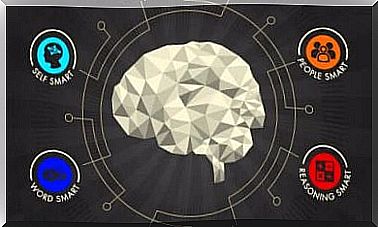Down Syndrome And Breastfeeding – Being Parents

Down syndrome is a genetic alteration produced by an extra chromosome in pair number 21. This alteration is also called Trisomy 21.
Chromosomes are parts of DNA that contain our genetic material. They affect the development of the brain and organs, making them the main cause of mental disability. It is the most common genetic alteration in humans.
This syndrome often leads to cardiac and digestive changes. The cause of this genetic alteration is still unknown. However, an advanced age of the mother, an eldest child who would be a carrier of Down syndrome or the fact that the parents are carriers of this genetic alteration are risk factors.
Faced with the diagnosis of this chromosomopathy during pregnancy, it is possible to carry out a Voluntary Pregnancy Interruption (abortion) or decide to continue it. Each of these options must be considered in an informed, free and conscious manner, in addition to being supported and respected by health professionals.
In France, the life expectancy of people with Down Syndrome is now between 50 and 60 years.
Diagnosis of Down Syndrome
During the first trimester of pregnancy, the screening, or combined screening of the first trimester, is performed. This helps calculate the statistical value of risk. That is to say, the probability that the child is a carrier of Down syndrome.

This screening detects the likelihood that the fetus will be affected by Down, Edwars and Patau Syndromes.
The risk is calculated by taking into account the mother’s age, and other markers determined by the ultrasound of the first trimester. Also analyzed are biochemical levels of maternal blood, which is deciphered in the first report of pregnancy.
Biochemical levels should be obtained and analyzed during a specific period of pregnancy. Normally this is done around week 9 or 10. We get a pregnancy hormone (Beta-HCG) value and pregnancy-associated placental protein (PAPP-A) values.
Ultrasound
The ultrasound will be performed between week 11 (day 2) and week 13 (until day 6). In addition, the marker used to assess the risk of chromosomopathies is nuchal translucency (TN). Indeed, the fetus with Down Syndrome has a large amount of fluids in this space.
If the risk is considered high, depending on the health budget of each region – and the risk rate, the woman will be offered a non-invasive prenatal test (NPWT) or amniocentesis.
The non-invasive prenatal test (TPNI) is a genetic test that analyzes chromosomal abnormalities in the fetus through a maternal blood test, which looks for the DNA of the fetus.
The purpose of amniocentesis is to obtain a sample of amniotic fluid, which will look for affected chromosomes in the fetus. Thus, the latter is performed by means of an abdominal puncture. It is an invasive examination that includes a risk of a spontaneous abortion.

Down syndrome and breastfeeding
In newborns with Down Syndrome, there are three characteristics that can make breastfeeding difficult. Thus, said features are: glossoptosis (tendency of the tongue to fall back), macroglossia (the tongue larger than normal) and hypotonia (decrease in tension or muscle tone).
In these newborns, breastfeeding helps improve coordination and language control. This would make it easier for the child to learn to speak, and would help strengthen his orofacial muscles as well as his jaw. In addition, breastfeeding offers additional stimulation.
On the other hand, one should not consider Down Syndrome as an impediment to be able to carry out successful breastfeeding . On the contrary, breastfeeding brings benefits that we should take advantage of.









